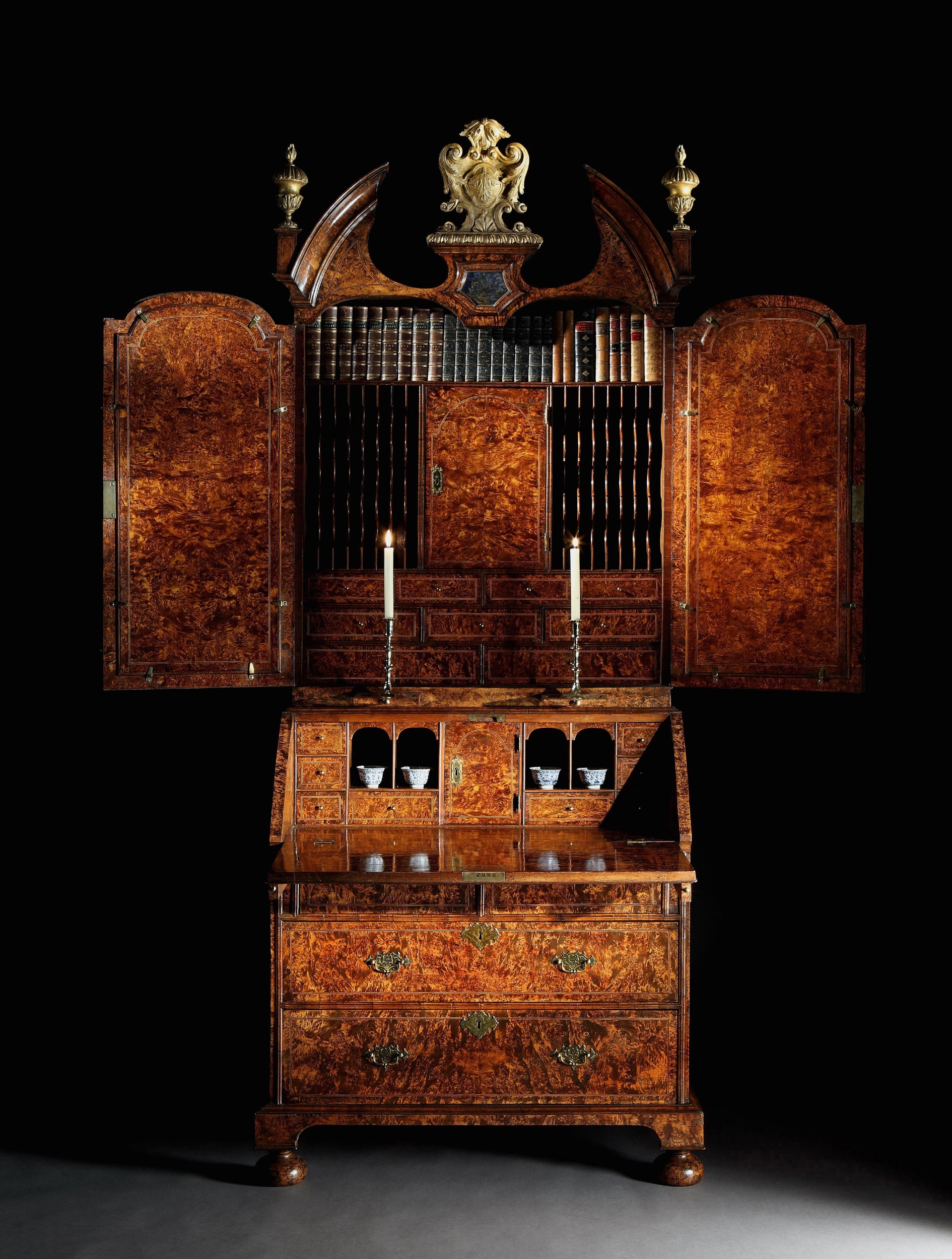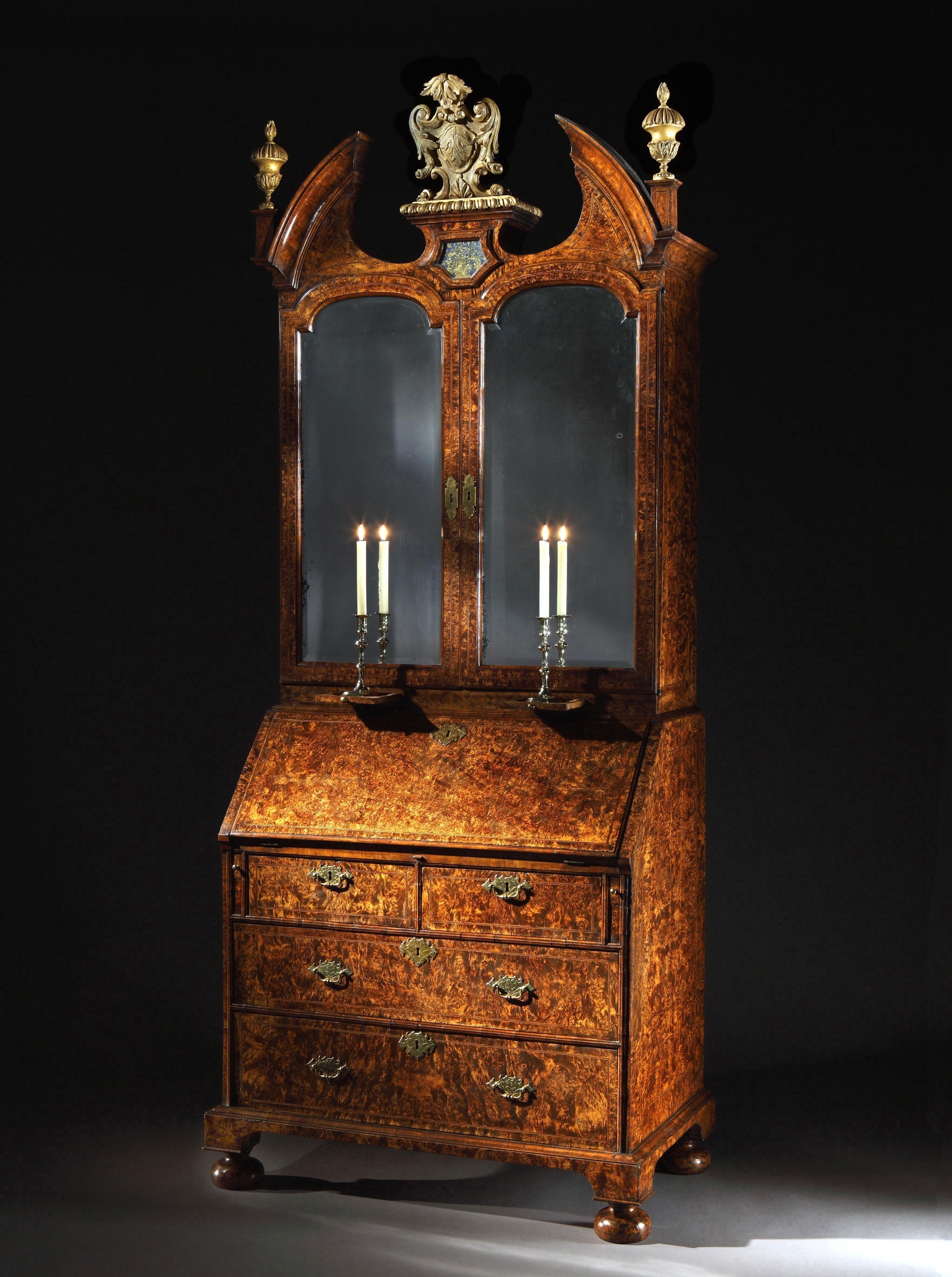

Circa 1710


Possibly commissioned by Sir John Philipps, 4th Baronet (1660-1736), for Picton Castle, Pembrokeshire, and thence by descent.
Picton Castle has belonged to the baronets Philipps since the mid-15th century. Throughout the 18th and 19th centuries they became one of the most influential families in Pembrokeshire, whose power extended over many aspects of local life. With their vast estates and philanthropic support of the Charity School Movement, they supplied Pembrokeshire with sheriffs, justices of the peace, lord lieutenants and members of Parliament for several generations. In consequence, Picton Castle became a focus of local social and cultural life throughout this period. Samuel Lewis' Topographical Dictionary of Wales, 1833, contains an extensive account of the building, describing it as 'a noble and spacious mansion of considerable antiquity; and though it has undergone some alterations and received several additions, to adapt it more for the purpose of modern residence, it still preserves much of its original character of a fortress'.
Although no eighteenth century bills, accounts and inventories of the contents of the castle have so far come to light, it is likely that this bureau-cabinet was commissioned for the castle by Sir John Philipps, 4th Baronet (1660-1736). Sir John was the first member of the Philipps family to make a noticeable impact on the castle, his fortunate marriage to Mary, daughter of Anthony Smith, a rich East India merchant, enabled some improvements to the building. In 1697 Sir John pulled down part of the curtain wall, built the terrace and created a main entrance at first-floor level. He also built an extra storey above the great hall, altered windows and possibly wainscoted the rooms in the North East Tower. It is possible that he introduced the bureau-cabinet in the years following these alterations.
The present bureau cabinet is finely veneered in burr maple, a wood often used by John Coxed (fl. 1711-1718) and later Grace Coxed and Thomas Woster (fl. 1719-1735). Trading from the White Swan Workshop, St. Paul's Churchyard, the firm labeled their furniture: 'At the White Swan in St. Paul's Church-Yard, London; makes and sells Cabinets, Book-Cases, Chests of Drawers, Scrutores [sic]; and Looking-glasses of all sorts at reasonable rates'. Adam Bowett, Furniture History, 'Labeled Furniture from the White Swan Workshop (1711-1735)', vol. XXXIX, 2003, pp. 71-98, cautions: '... it must be emphasised that the use of stained burr maple veneers, with or without crossbanding and stringing, does not on its own constitute adequate proof of (Coxed and Woster's) authorship. The technique of staining veneers in this way was widely practised, and scores of pieces survive which otherwise bear no relation, either technically or stylistically, to the White Swan oeuvre.'This technique involved the cutting of the roots of the field maple tree into veneers, laying the veneers down onto the carcase and then pouring sulphuric acid onto the veneers to open up the grain. With the grain open a mixture of soot and oil was rubbed into the grain to obtain the desired marbleised effect. The veneer was then sealed with a polish and waxed. It was generally thought that the desire for a marbleised effect arose as a result of people seeing, on the Grand Tour, the fashion of the Italian cabinet makers of making furniture out of marble.
| DIMENSIONS | CM | INCHES |
|---|---|---|
| Width: | 104.5 | 41 |
| Depth: | 61 | 24 |
| Height: | 23 | 93 |